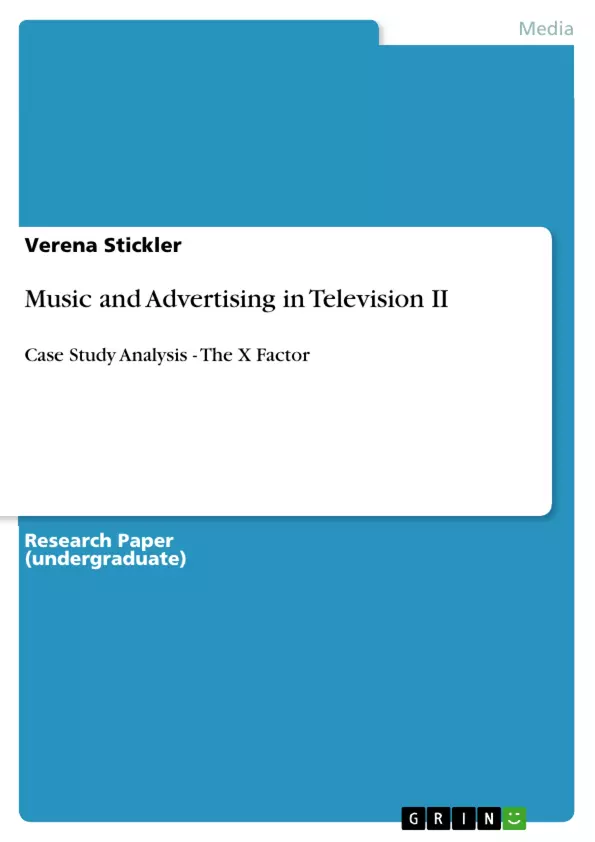“The X Factor” is a reality pop program which first aired in the UK in September 2004 and which is still on screens today. The history of the sector is multi-faceted with the very first reality pop series, New Zealand’s “Popstars”, dating back to 1999. “The X Factor” emerged after “Pop Idol”, a similar show to “Popstars”, was put on indefinite hiatus after its second run. Ever since its first series, “The X Factor” has gone from strength to strength, with audience and voting figures increasing with each series.
The single most important person behind “The X Factor” is music mogul Simon Cowell who created the show back in 2004. His television company SyCo TV produces the program together with Fremantle Media’s talkbackTHAMES. “The X Factor” is aimed at reality TV’s target demographic and manages to attract an audience of approximately
8-9m during its weekly live broadcasts.
As the reality genre has proven particularly amenable to TV and media convergence, “The X Factor” does not just rely on the television set to communicate its message to its audiences. It also relies on other “platforms”, like the internet, live events and telephone voting, hence altering popular music consumption. With the audience determining the winner of “The X Factor” several albums released by contestants have reached the UK Albums Chart; six of them making it to number one.
“The X Factor” is often heavily criticized for standardizing pop music. Winners of “The X Factor” are often referred to as over-hyped and over-manufactured artists with reality pop programs being accused of not producing important or lasting musicians. However the commercial success of “The X Factor” is indisputable, which as a result, continues to encourage the production of further X Factor series as well as similar shows to go on.
Inhaltsverzeichnis (Table of Contents)
- Executive Summary
- Introduction
- History
- Reality TV
- Reality Goes Pop
- "The X Factor"
- Key Players
- Audience
- Impact on Popular Music Consumption
- Issues and Trends
- Summary
- References
- Bibliography
- Appendices
Zielsetzung und Themenschwerpunkte (Objectives and Key Themes)
This report examines the impact of the reality pop television program "The X Factor" on the consumption of popular music. It analyzes the program's historical context, key players, audience demographics, and its influence on popular music trends. Additionally, the report will critically evaluate the program's impact on the music industry and explore any issues or trends associated with its success.
- The historical development of reality television
- The role of "The X Factor" in popular music consumption
- The impact of the show on the music industry and trends
- The audience and its engagement with the show
- The influence of "The X Factor" on the production and distribution of popular music
Zusammenfassung der Kapitel (Chapter Summaries)
The report begins with an Executive Summary, providing a concise overview of the program and its impact on popular music. The Introduction then outlines the objectives and methodology of the report. Chapter 3 delves into the history of reality TV, tracing its development from tabloid journalism and documentaries to popular entertainment. This chapter explores the emergence of reality pop programs like "Popstars" and "Pop Idol" and the rise of "The X Factor." The report then examines the key players involved in the program, the targeted audience, and the impact of "The X Factor" on popular music consumption. Finally, the report explores issues and trends associated with the program, analyzing its impact on the music industry and the reception it receives from audiences.
Schlüsselwörter (Keywords)
This report explores the intersection of reality television, popular music consumption, and the impact of "The X Factor" on the music industry. Key themes include the history of reality television, audience demographics, the role of key players, and the influence of the program on popular music trends. The report also delves into the production and distribution of music, analyzing the commercial success of "The X Factor" and its implications for the music industry.
- Citation du texte
- Bachelor of Arts Verena Stickler (Auteur), 2008, Music and Advertising in Television II, Munich, GRIN Verlag, https://www.grin.com/document/177835



